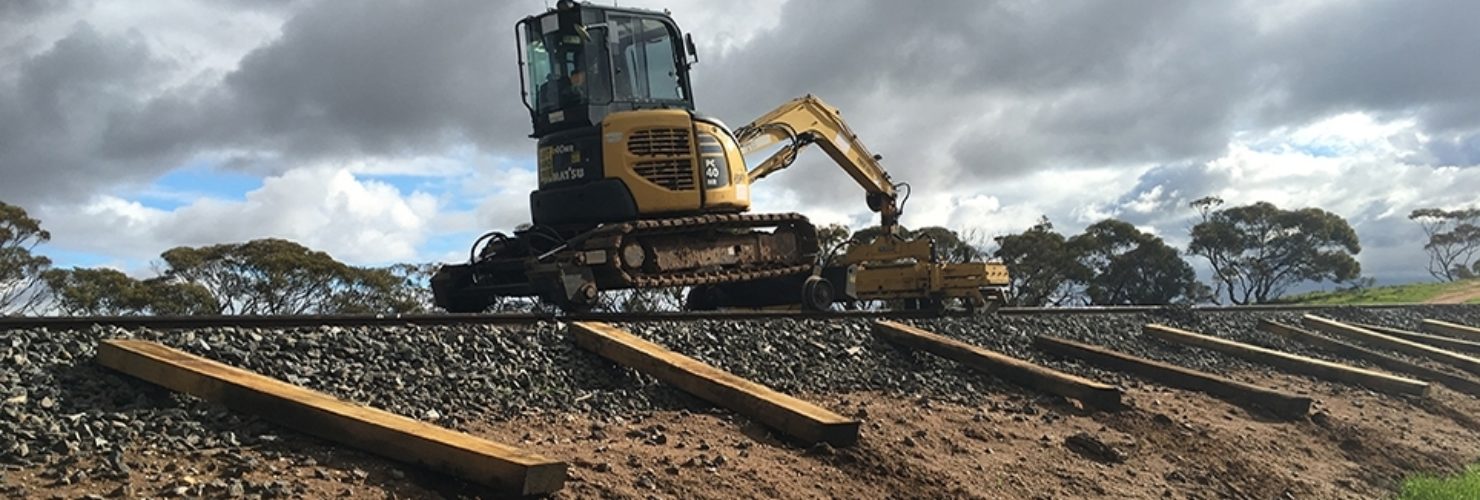Friday, December 13, 2019
Safety Message: Load distribution for Road Rail Vehicles
rail transport operators are reminded that wheel loads effect safe guidance of vehicles on track with excessive loads leading to damaged rolling stock components and track structures.

rail transport operators are reminded that wheel loads effect safe guidance of vehicles on track. Excessive wheel loads can damage rolling stock components and track structures. Insufficient vertical wheel loads can result in wheel climb or rollover derailments.
Awareness of this is particularly important when operating Road Rail Vehicles (RRVs) because of the diversity of RRV designs, suppliers and applications. This safety message focusses on wheel loads on RRVs.
The load on the wheels must not exceed the limit/s set by the Rail Infrastructure Manager under any travelling or working condition. The limit is usually expressed as an allowable maximum axle load.
Good design, particularly of rail vehicles, aims to distribute vehicle weight across the wheels as evenly as possible in the static load condition. In other words, when the vehicle stands stationary on straight, flat track on horizontal ground, the load on the wheels should be as close to equal as possible.
Static wheel loads vary when the vehicle is standing on curved, twisted or sloping track1.
Wheel vertical loads vary further if the RRV is altering its load distribution during work activities by, for example, extending or swinging its boom or lifting or manipulating a weight.
Over and above these static loads vehicle-track dynamics arise when RRVs are in motion causing further variations of wheel loading. For example, the body mass of an RRV may displace and roll inwards in a curve with track cant when the RRV goes slowly through it (cant excess), or outwards in the same curve at higher speed (cant deficiency). In addition wheelsets, bolsters or any number of masses on a rail vehicle may resonate at certain speeds resulting in lateral (or other) instability causing high dynamic forces between wheel and rail.
As can be seen from the above description wheel loads on RRVs can be affected by design and manufacture, by track geometry, working conditions and vehicle running dynamics.
Rail vehicle designers, manufacturers and operators must adhere to standards in order to keep wheel loads within safe limits under all rail travelling and working conditions. These standards include:
- Design standards and type testing stipulated in Australian Standard AS-75022
- Australian Standard AS 7501, and any additional Rail Infrastructure Manager requirements regarding rail compliance certification, including annual recertification.
- Train operating conditions, such as maximum axle loads and speeds, as stipulated by the Rail Infrastructure Manager.
- Working standards set for the RRV by the designer. The different combinations of machines and attachments lead to many differing load charts and operating conditions. Some vehicles may not be allowed to conduct their work activities on rail at all – they must be on their rubber tyres and stabilisers.
Notes:
- It should be noted that railway vehicle suspensions have unique features to equalise wheel loads. These features include primary and secondary suspension arrangements, as well as bogies that can roll, pitch and rotate relative to vehicle bodies. Road vehicle suspensions are not necessarily as effective so when converting road vehicles to run on rail the prescribed tests, including the twist test, must be passed.
- Two requirements stipulated in AS-7502 are particularly relevant to wheel loads and the ability for RRVs to be safely guided through curves on rail:
- Clause 10.1 states that the maximum axle load and overall vehicle mass shall not exceed limits set by the Rail Infrastructure Manager for the routes over which approval is sought for the road rail vehicle to operate
- Clause 11.6, which deals with vehicles’ ability to safely negotiate track twist in transition curves, stipulates that wheels may not unload more than 60%. In other words, no wheel may have 40% or less of it’s nominal load under any condition of track twist. It is useful to think of a table to understand this concept. If the table stands on a twisted floor the leg at the lowest point in the floor will carry least load. If the floor gets more twisted the load on that leg decreases further. Clause 11.6 states that the load on this leg (wheel) may not drop below 40% of what it was when the table (vehicle) was on a level floor (track).